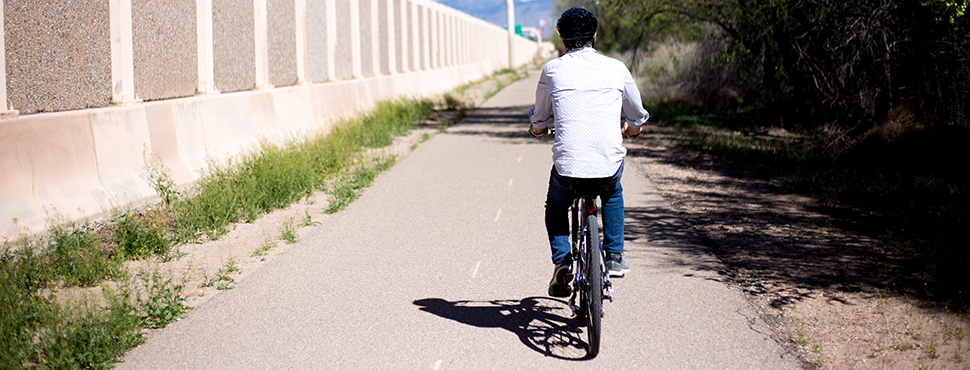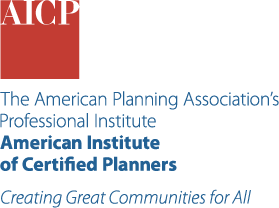Equity in Practice
Pueblo of Laguna Bike and Pedestrian Plan Connects Six Villages

The Pueblo of Laguna, a federally recognized sovereign tribal community in western New Mexico, comprises six villages stretching across rural landscapes. These villages are home to approximately 4,000 residents, many of whom rely on automobiles for transportation. This dependence on vehicles limits active transportation options and contributes to health and safety issues within the community.
Community Challenge
Due to the lack of safe walking and biking infrastructure, residents expressed interest in developing walking and biking trails and addressing unsafe conditions, especially for children walking and bicycling to school.
One of the primary concerns was the need for safer pedestrian and bicycle routes. The major roads connecting the villages, including state highways, needed more essential safety features like bike lanes, wide shoulders, safe pedestrian crossings, or well-maintained sidewalks. In some cases, the topography and steep slopes adjacent to the roads presented additional hazards. This infrastructure gap posed a particular risk to children commuting to school on foot or by bicycle, with concerns about speeding traffic, blind corners, and unsafe crossings.
Health issues, including high rates of diabetes and obesity, were also prevalent in the Pueblo. With approximately 17 percent of Pueblo residents diagnosed with diabetes, far exceeding the national average, the community recognized the need for more accessible and safe spaces for physical activity. Promoting walking and biking as alternative modes of transportation became a top priority to reduce traffic accidents and address severe public health concerns.
Planning Solution
The Pueblo of Laguna initiated a comprehensive planning process to address the need for non-motorized transportation options in response to these challenges. In 2011, the Pueblo secured a U.S. Department of Transportation TIGER II Planning Grant, which provided the necessary resources to develop a Bicycle and Pedestrian Route Plan. The plan focused on creating a safe and connected network of routes connecting the six villages, providing both commuter and recreational routes.
Community involvement was crucial in developing the Pueblo of Laguna Bicycle and Pedestrian Route Planning project. The Pueblo created the Community Biking and Walking Advisory Group (CBWAG) to ensure continuous input from residents, stakeholders, and local government representatives throughout the planning process. Each village in the pueblo appointed two representatives to guide the project.
The CBWAG regularly met with the project team, organized field tours, facilitated community events, and administered surveys, ensuring that local needs and feedback were fully integrated into the plan. The planning process included over 30 community meetings, with residents invited to identify problem spots, desired routes, and necessary safety improvements. Through these efforts, the planning team was able to gather feedback and prioritize 236 miles of routes based on their suitability for biking and walking.
The plan proposed three types of routes:
- Pueblo routes — longer routes connecting villages
- Village routes — local loops for recreation
- Linking routes — shorter paths that connect key destinations like schools, libraries, and community centers.
Specific improvements included the construction of a trail linking the middle school to other community facilities and a roundabout connecting elementary and middle schools to improve safety for pedestrians and cyclists.
Outcome
The Bicycle and Pedestrian Route Plan resulted in several significant outcomes, including completing key routes and developing a new trail system that connects several community facilities, reducing the need for students to walk or bike along dangerous highways. The roundabout project near the elementary and middle schools further increased pedestrian safety, minimizing the risks of crossing busy roads.
Community engagement played a vital role in the plan's success. Over 230 participants in workshops and surveys helped identify and prioritize the community's needs. As a result, several projects were fast-tracked, with funding secured not only through the TIGER II grant but also through other programs like the Federal Highway Administration's Highway Safety Improvement Program (HSIP). Residents now have safer routes to walk or bike within and between villages, which is expected to improve community health and reduce traffic accidents.
Considerations for Your Community
The success of the Pueblo of Laguna Bicycle and Pedestrian Route Plan offers several essential takeaways for other communities seeking to implement similar infrastructure projects. First, robust community engagement is critical in designing infrastructure that meets local needs. By engaging the community early and often, planners were able to build a network that was both functional and culturally appropriate. Second, communities may benefit from exploring diverse grant opportunities and strategically incorporating bike and pedestrian improvements into existing infrastructure projects to optimize resources.
Lastly, prioritizing safety and long-term maintenance is critical to ensuring the infrastructure remains effective. The Pueblo's focus on using high-quality, durable materials for trail amenities like benches and shade structures demonstrates a commitment to long-term usability. The Pueblo of Laguna Bicycle and Pedestrian Route Plan is an excellent example of promoting transportation equity while enhancing public safety by broadening access for pedestrians and cyclists.
Top image: iStock Editorial/Getty Images Plus - JannHuizenga
About the author


